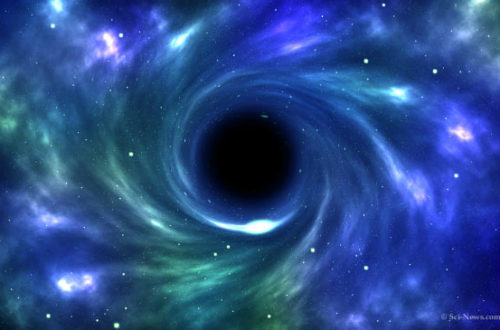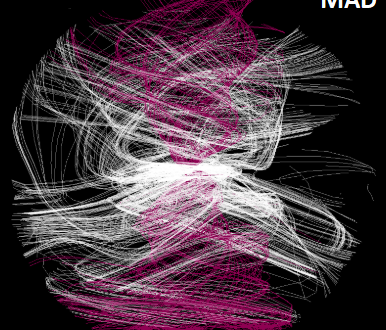Black holes
Sometimes people ask if black holes work like a vacuum cleaner, which can empty the whole universe, starting with the surrounding stars. We know that it is not true: the gravitation works roughly in the same way for solar-mass black hole and the Sun (talking about the space above solar radius from the black hole). The black hole radius is defined as Schwarzschild radius, linearly proportional to the mass of the black hole. Beyond the sphere of this radius nothing can escape from the black hole, even light. We have the whole range of black holes (BHs), depending on its mass. It is highly unlikely for solar-mass black holes to swallow surrounding stars. If may be rather a merge, like you all probably know about the gravitational wave detection due to BHs merge. Black holes commonly exist in binaries, often called X-ray binaries.
Massive black holes
On the other side of range, supermassive black holes are in the centre of galaxies and they have masses bigger than tens millions solar masses. Some of them are really massive, like the one observed by our colleagues from Texas 17 billions solar masses BH. Such a massive black hole can swallow stars and dust in close surrounding, but it is slow and progressive process. Also orbits very close to the black hole energetically do not allow stars to be there (on very low orbit). But there are many stars orbiting the black hole, what we can see even in our Galaxy. They spend most of their time far away in safe distance from it, but some of them have their orbital pericenter (some people use a nice term peribothron) very close to the BH. It means that they may be so unlucky to be swallowed or disrupted by the black hole.
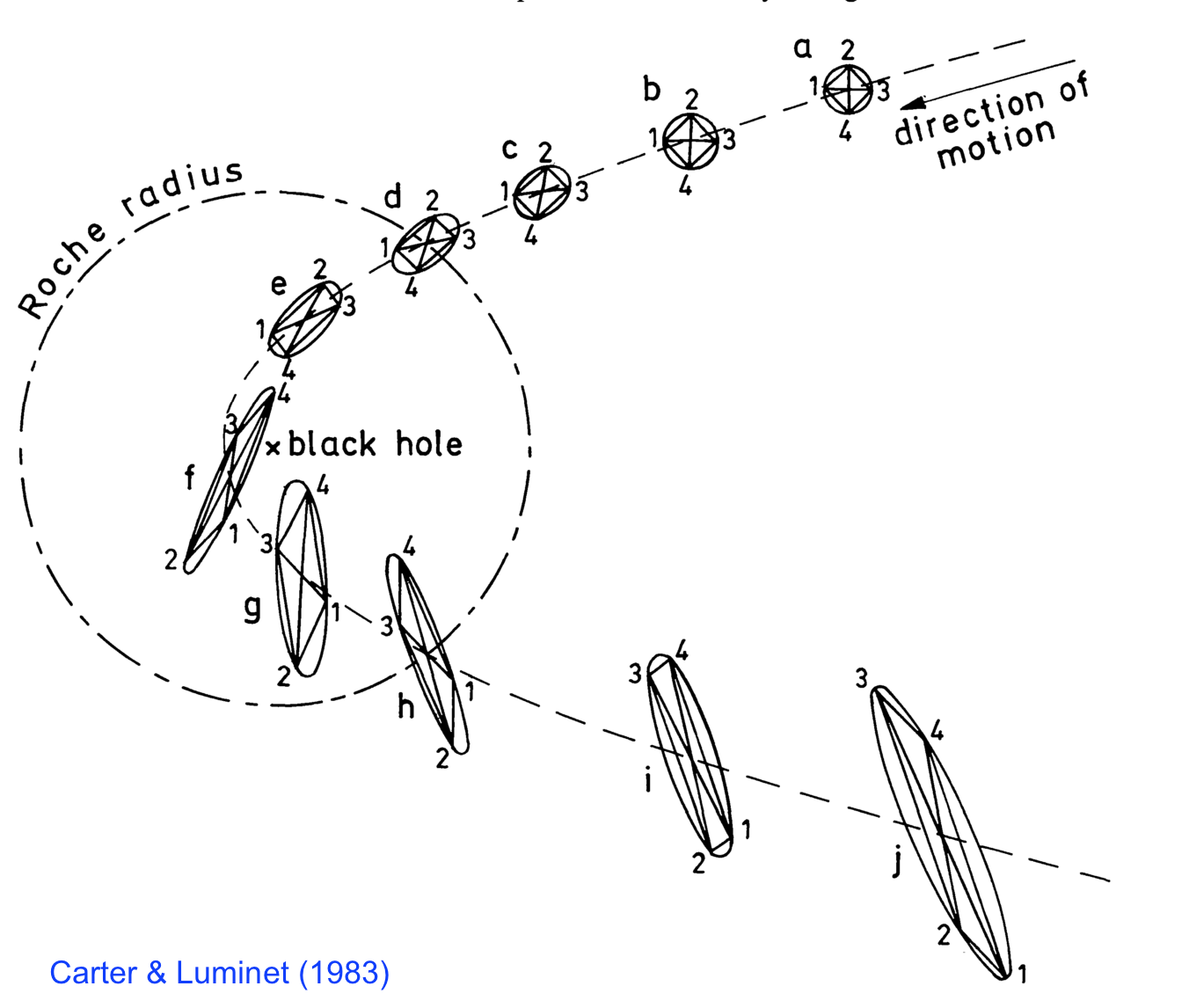
Tidal disruption of unlucky star
Recently observed, black holes having about million solar masses (sometimes called massive or intermediate-mass black holes) can disrupt the star, which passes to close. If star goes close enough, closer than tidal radius is, the combination of centrifugal and gravitational force caused by black hole is stronger than star’s self-binding gravitational force. The equilibrium between star’s internal gas pressure and its gravity cannot be sustained any more, so it is disrupted. The phenomenon when the star is disrupted in that way is called Tidal Disruption Event (TDE). The conservation of energy and angular momentum causes the debris to be roughly uniformly distributed on the plane of the hypothetical orbit of the original star. About half of the matter from the star still orbits the black hole, creating the disc. The other half is gravitationally unbounded, slowly escaping from the black hole. Due to relativistic precession the bounded part causes self-crossing of the stream and this is the phenomenon letting the disc to be created. In some conditions this system can create an outflow, or even a luminous jet (collimated stream of high-velocity plasma) – similar to these observed in quasars or blazars.
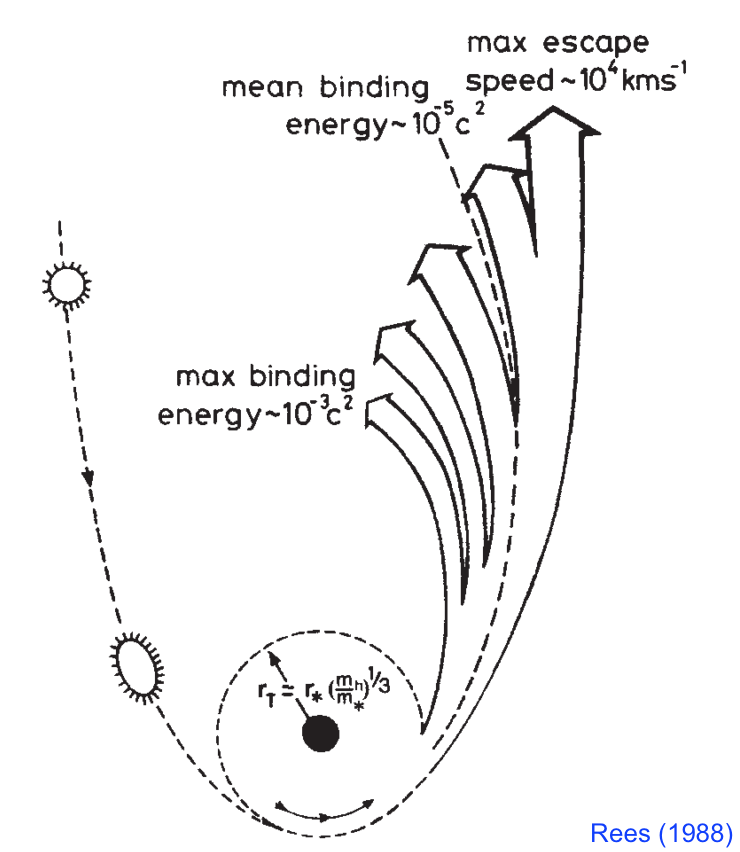
Such an outflow has a specific radio characteristics, caused by synchrotron radiation. Those are things we study in our group, and TDEs may help us to find an answer for many unsolved problems. We try to find some correspondences between TDEs and other objects, such as XRBs, AGN and GRBs. TDEs also may be used to probe the population of intermediate-mass black holes. Massive black holes are easier to detect, and they cannot produce TDE (the tidal radius is already within Schwarzschild radius).

If you are more interested, there is an interesting catalog of TDE candidates or even a brief summary by our colleague James Guillochon. My research was predominantly focused on Sw J1644+57, primarily extremely luminous object, even considered then as an extremely long Gamma Ray Burst. This is the light curve of the event I studied:
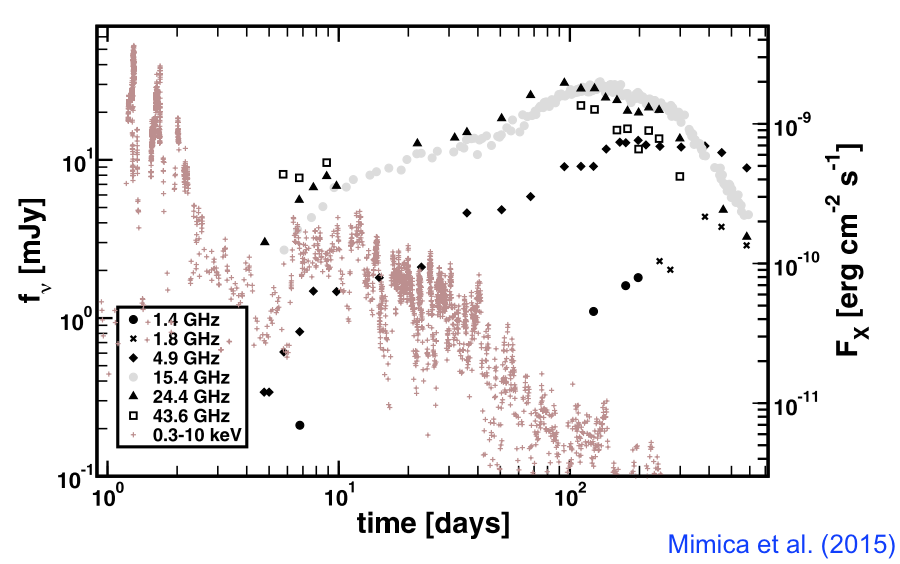
Interesting, isn’t it?

